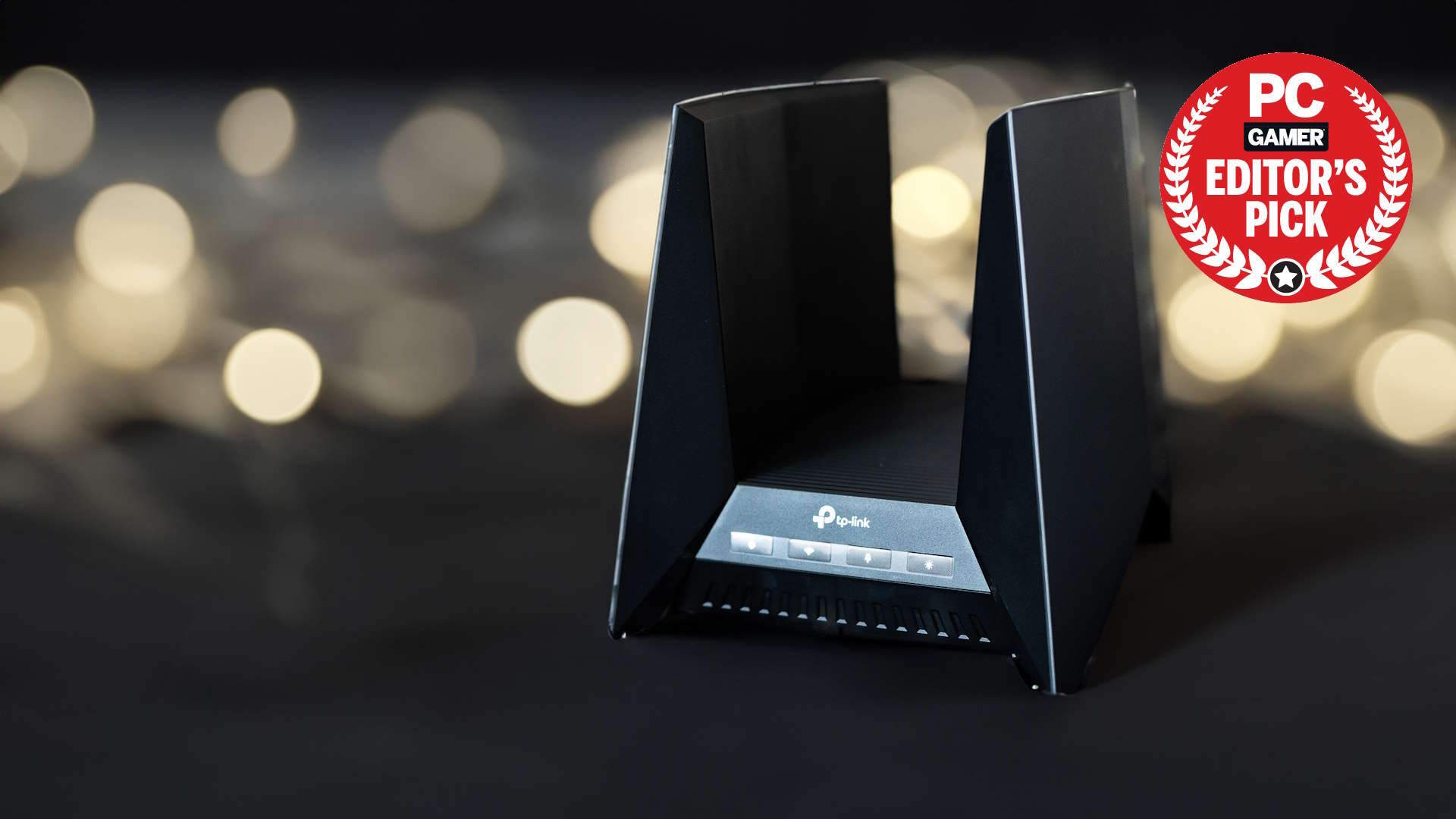
Exterior, space. Stars twinkle. A serene planet hangs in the blackness. A Star Destroyer passes across the camera's view to orchestral music. The shuttle of evil Sith Lord Ray Tracingus flies by with a scream of engines, enters the destroyer's bay and lands, folding its wings up as it does so. Wi-Fi reception aboard the heavily armed warship improves considerably.
Yes, TP-Link's latest and greatest Wi-Fi 7 router, the Archer GE800, is what you might call a distinctive shape, and if you put it on display with some model TIE Interceptors and a CR-90 corvette or two it might blend in, or at least have people wondering which part of the expanded universe it comes from.
This is no simple shuttlecraft, however, but a fully armed and operational... [that's enough -ed] battle... er... Wi-Fi 7 router with five fast Ethernet ports for smuggling data away from Imperial probe droids and capable of downloading the Kessel Run in less than 12 parsecs [you're fired -ed]. Look, the antennas are merged into two panels that stick up like the Netgear Nighthawks of old, OK? And they look like wings.
The box is huge, and emblazoned with 'dominate the competition'—a slogan most probably aimed at gamers unless there's some kind of competitive networking event we're unaware of. And while a Wi-Fi World Cup might be fun, we suspect a certain amount of performance-enhancing plugs might be involved.
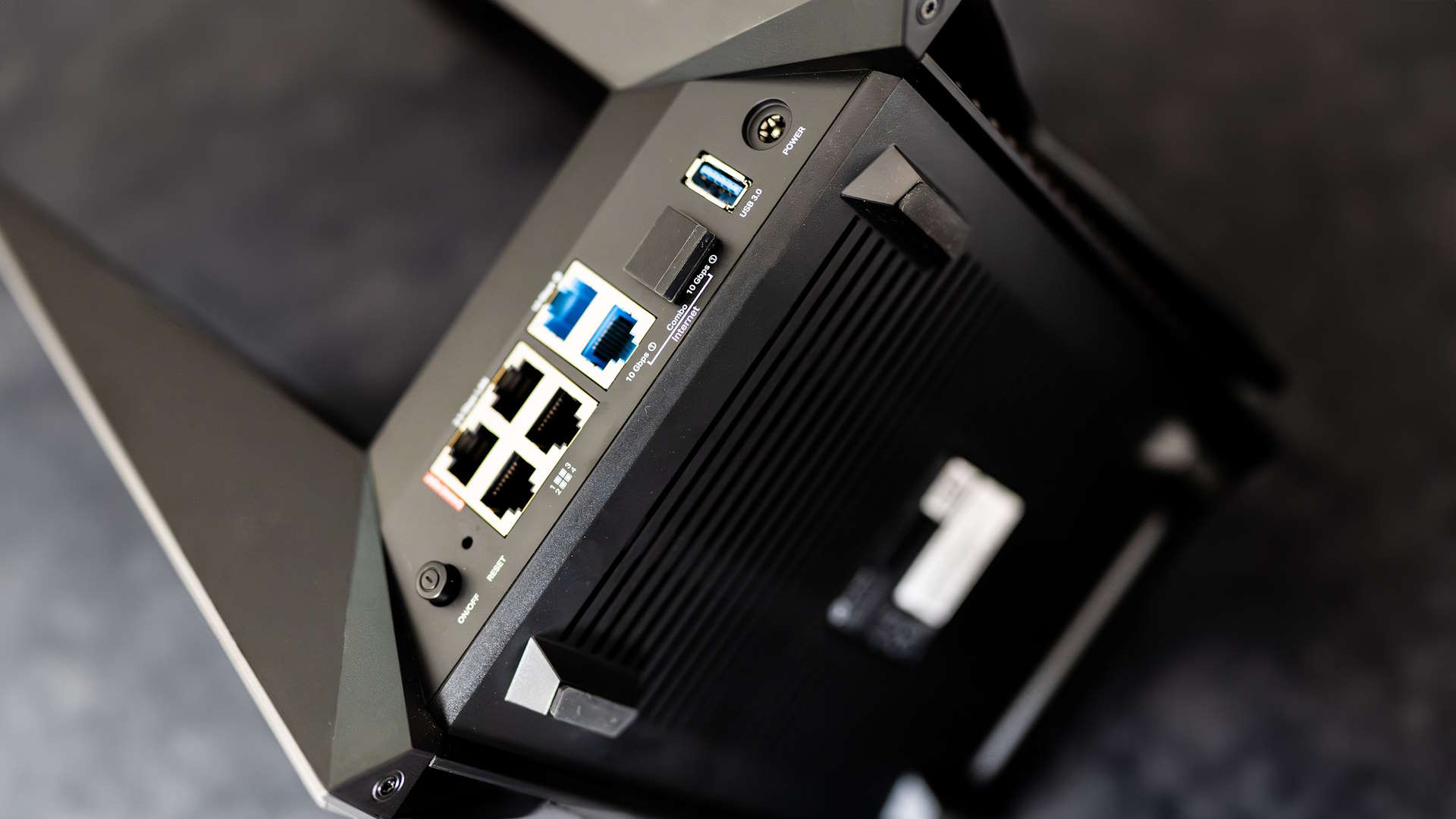
Wireless standard: Wi-Fi 7
Max speeds (claimed): 2.4 GHz: 1376 Mbps; 5 GHz: 5760 Mbps; 6 GHz: 11520 Mbps
MU-MIMO: Yes
Ethernet ports: 1x 10 Gbps, 4x 2.5 Gbps
WAN: 10 Gbps
Processor: Quad-core, 2.2GHz
RAM: 2GB
USB: 1x USB 3.0, 1x USB 2.0
Dimensions: 29.2 x 20.7 x 22.4 cm
Weight: 2.21kg
Price: $600 | £600
Your first challenge is to get it out of the plastic wrapping, which clings tightly to the angles and flat plates of the router. It's fully assembled, with no antennas to screw in, but you'll be forced to put it down on a desk before committing it to the cupboard or shelf just to take in the sheer majestic size of the thing. Footprint-wise, it's the size of a small laptop, but a laptop that rises six inches into the air. Between the wings there's even an active cooling fan—it really is like a laptop.
An Ethernet cable and a phone SIM tool—for poking the recessed reset button—are included, plus a power brick which came with a US-style three-pin plug that connects to the brick with a cloverleaf connection—watch out in your region if you have to replace the cable, as cloverleafs are less common than kettle leads. One of the 10 Gbps Ethernet ports is for the WAN hookup, but there's also an SFP+ port for direct fibre connections (the one on the review model is filled with an easily removable rubber bung) and you can even combo the two together for unheard of amounts of internet. Setup is a case of connecting to the Wi-Fi hotspot using the password (or QR code) printed on the bottom, and using the phone app or web interface to create passwords and go through a few simple questions. It's a very fast and easy process.
Assuming the Ethernet ports are at the back, it's one of the few routers to be deeper than it is wide, and as you're going to want the front and back of the unit to be accessible—there are buttons for WPS, Wi-Fi switch-off and more on the front, plus a USB port and on/off switch alongside the Ethernet on the back—it's going to be better installed sideways, so that it doesn't hang over the edge of a shelf and you can appreciate the RGB.
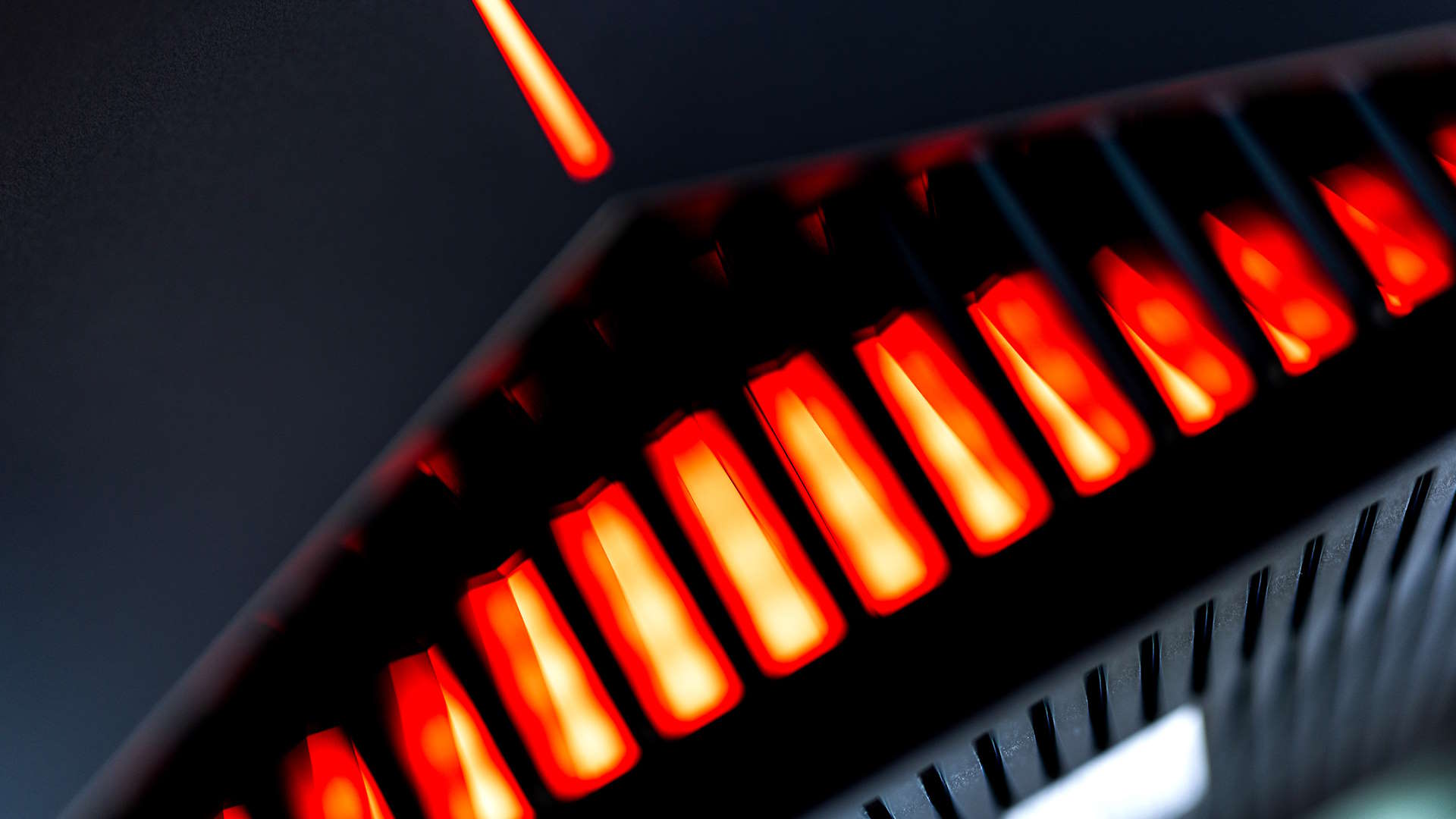
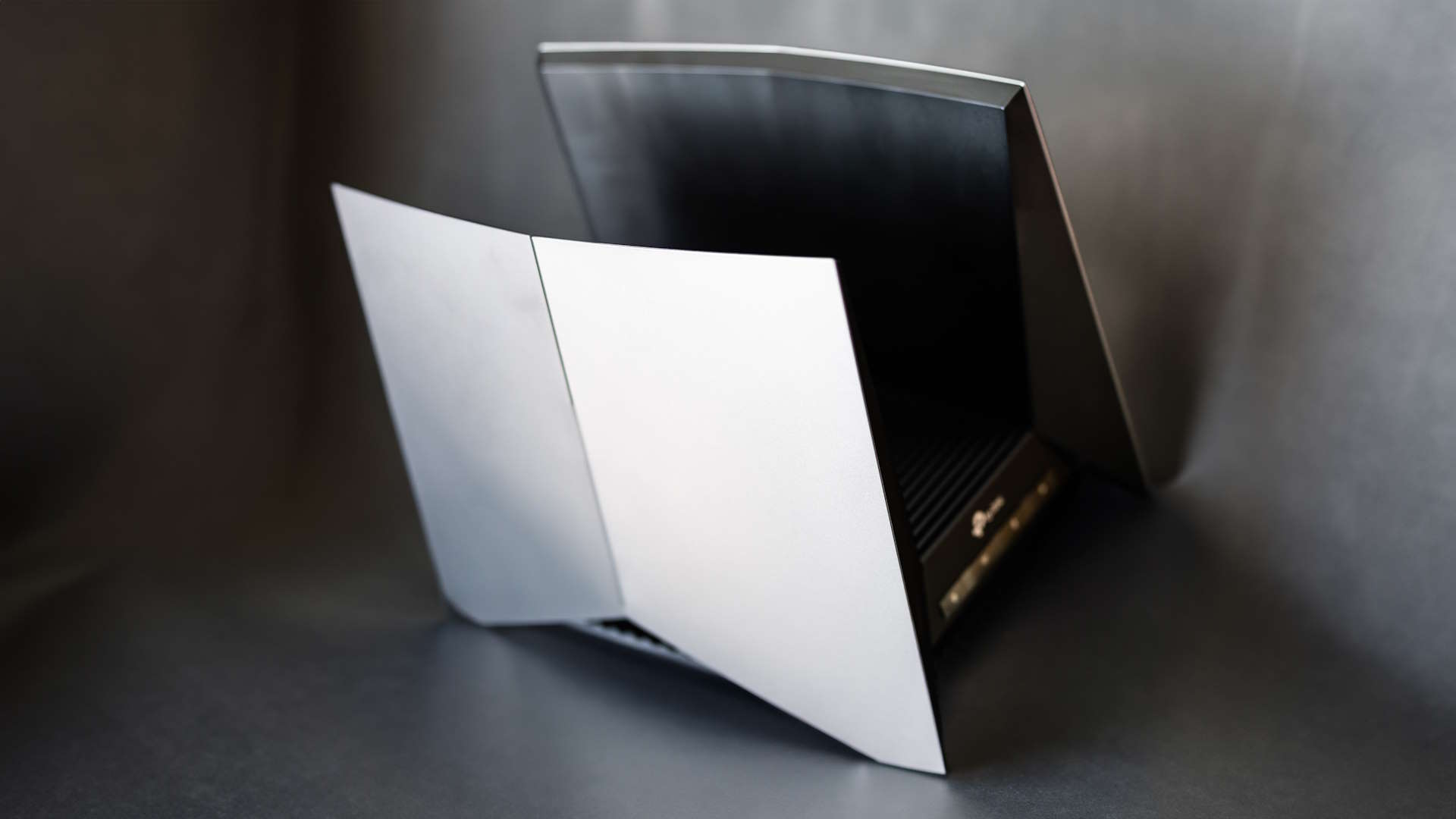
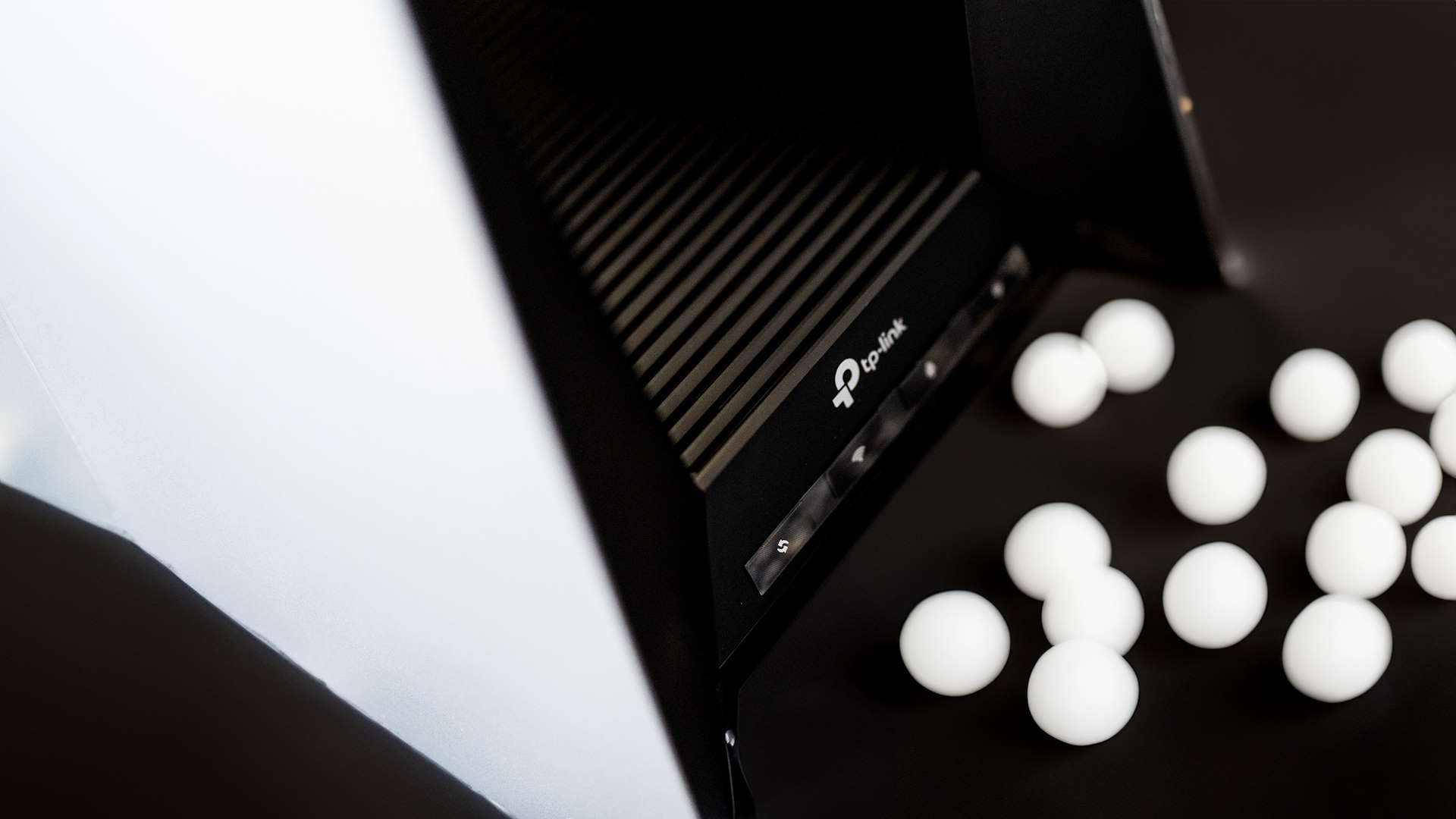
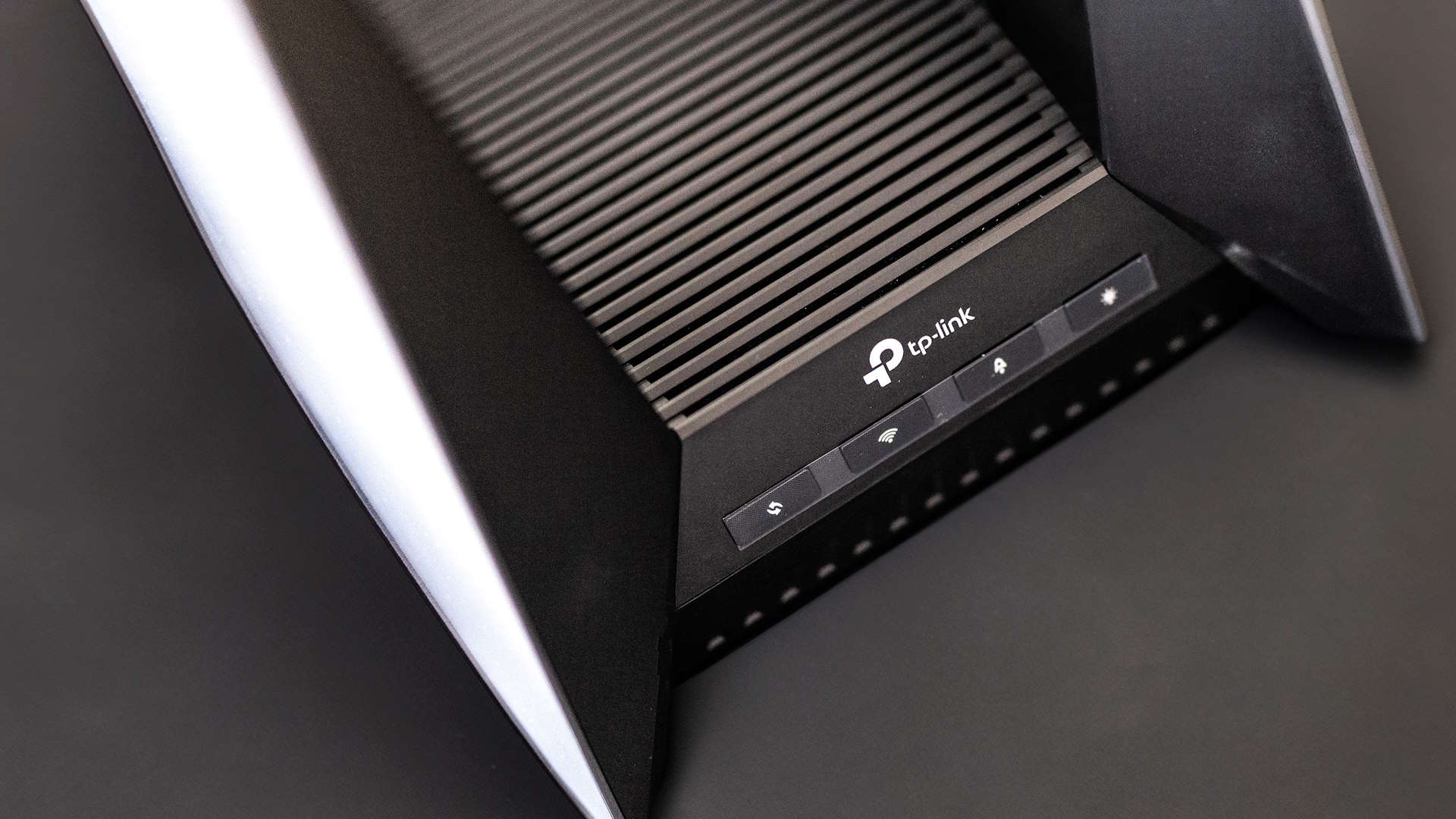
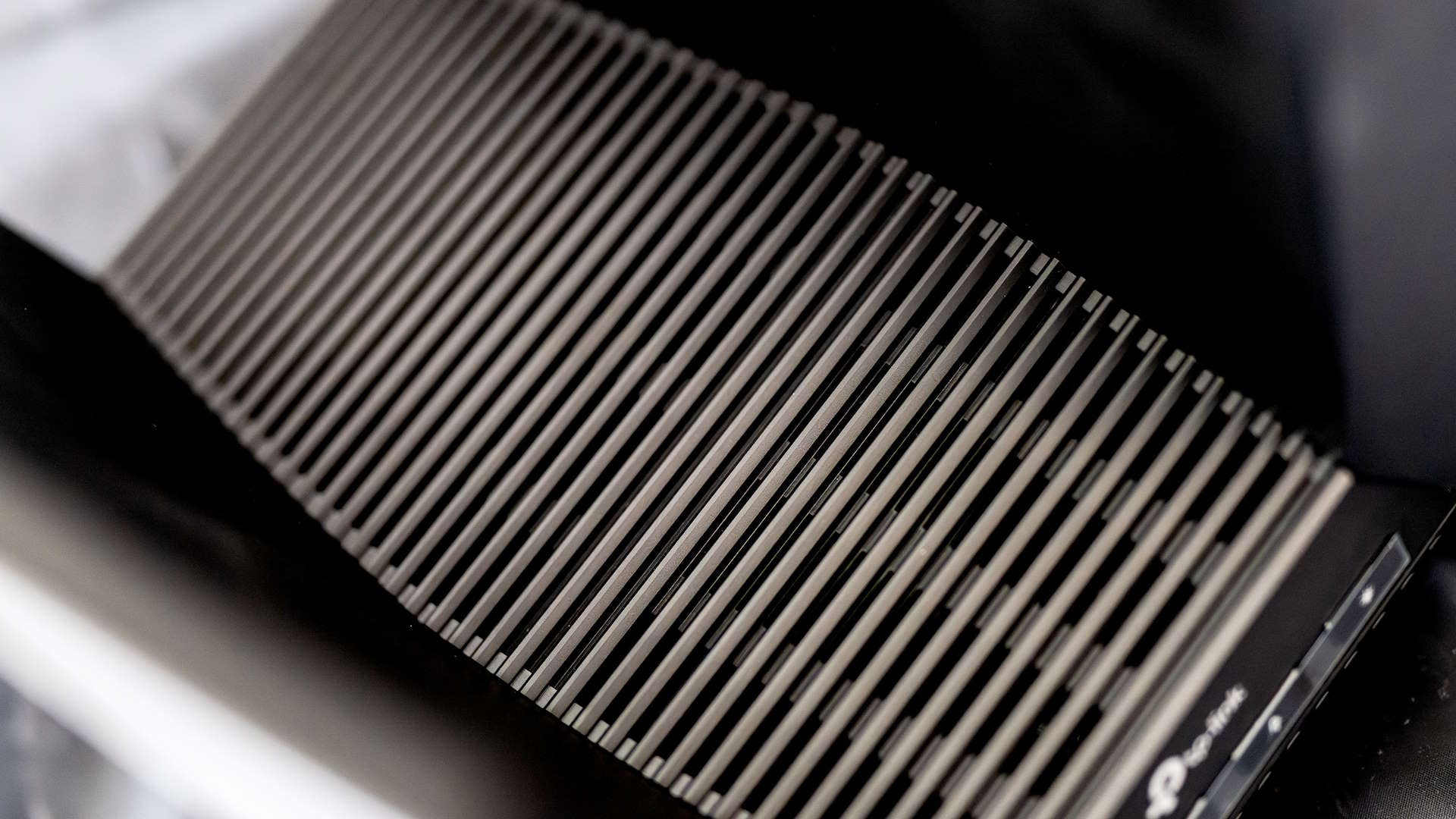
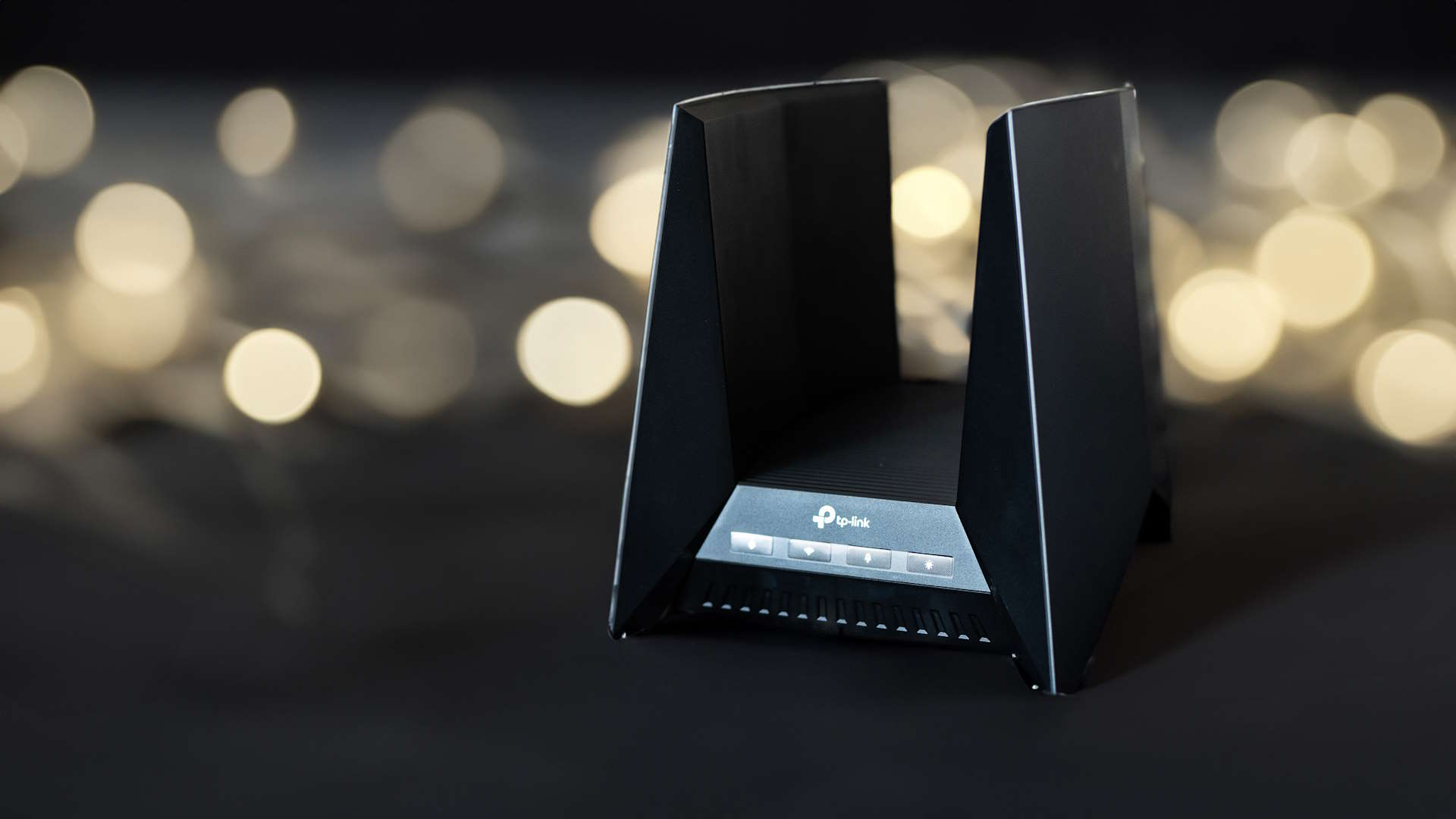

Oh yes. The coloured lighting plague that has led to desktop PC cases looking like Fourth of July celebrations and laptops projecting manufacturers' logos onto our knees has taken root on this router, with multi-hued LEDs buried in the vertical antenna plates and behind grilles that now, to return to the previous tortured Star Wars metaphor, look like engines.
You can turn it off. There's a dedicated button. Use it.
The Archer GE800 is certainly not cheap, but it certainly is fast, and while the benefits of Wi-Fi 7 may be best experienced on a network with a particularly fat connection to the wider internet and a lot of separate devices to share those megabits between, a router like this is an upgrade for anyone still labouring away with Wi-Fi 5. One of the Ethernet ports is a ‘gaming port' which will prioritise your traffic if you plug your gaming PC into it, but really with a router operating at this level network congestion should be the least of your problems. There's automatic QoS on-board too, which claims to detect and optimise gaming traffic without you having to interfere—though you can tweak it—and Homeshield security. You even get access to the Gamers Private Network VPN service.
✅ You've got a lot of internet and like to share: If you're rocking at least gigabit internet and a plethora of devices to share it among, the GE800 will earn its keep.
✅ You're into the Star Wars vibe: Seriously, it looks like Kylo Ren's shuttle, people.
❌ You're after a router-based value proposition: You can find 90% of the performance for half the price elsewhere.
The published wireless throughput figures are as huge as the box it comes in, offering a whopping 11.5 gigs of 6 GHz bandwidth to play with, and over a gig on the longer-ranged 2.4 GHz band, which will be useful for that relative who hasn't updated their phone since 2010 (it is of course backwards compatible) and for when your fridge downloads a firmware update. You're not going to get all that in one go, even if you're transferring data to a networked SSD array, but it can be shared out among a lot of devices without succumbing to slowdown or latency. Some of this capability comes from using the latest version of the Wi-Fi spec, and some from a Qualcomm chipset that not so long ago we'd have been calling a flagship smartphone.
In testing, the GE800 manages something close to a perfect score, with no weird peaks and troughs. Each network gets faster as we move up the GHz scale, and there's a distinct drop off in transmission speed as the client device is moved away from the server and a few walls and a floor are put in between. It's all exactly as the Force predicted.
It may be large and expensive (though it's actually not the priciest router on the market), but there's no arguing with the results. If your wallet and shelving can take it, and you have a fast internet connection you want to distribute among multiple devices that can use Wi-Fi 7—or think you will have in the near future—then the TP-Link Archer GE800 has got your back with this one.







